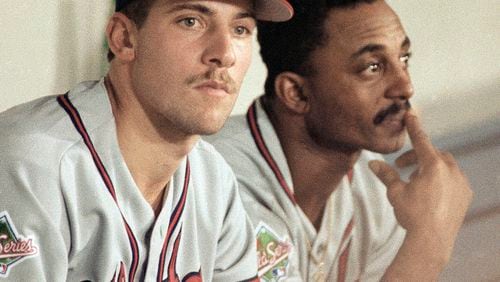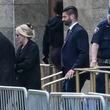NONFICTION
“Down to the Last Pitch: How the 1991 Minnesota Twins and the Atlanta Braves Gave Us The Best World Series of All Time”
By Tim Wendel
Da Capo, 288 pages, $25.99
What was the greatest World Series of all time? Yankee fans might pick 1956, when the Bronx Bombers beat the Brooklyn Dodgers four games to three, including Don Larsen’s perfect game. Pirates fans will never forget Bill Mazeroski’s home run, which gave them the seventh game and the championship in 1960. In Cincinnati they still call the Reds’ best of seven in 1975 over the Red Sox the classic of classics. But the 1991 World Series between the Minnesota Twins and the Atlanta Braves is probably the only one remembered as the greatest by players and fans of both the winning and losing teams.
Tim Wendel, a great baseball writer and historian, relives the “Worst-to-First” Series, the only time two last-place teams rebounded the next year to play for the championship. Two superb teams were pitted against one another: the AL pennant-winners, the Twins, won 95 games, and the NL champion, the Braves, won 94. For the series, they played five games in October decided by one run, four games that weren’t decided until the final at-bat and three that went into extra innings.
The winning Twins scored 24 runs; the losing Braves, by virtue of a 14-5 win in Game Five, the only blowout game of the Series, scored 29. Both teams hit eight home runs. After the final game, writes Wendel, “In the Twins clubhouse Commissioner Fay Vincent declared this ‘Probably the greatest World Series ever played,’ and the Twins broke into an impromptu rendition of Queen’s ‘We Are The Champions.’ Players on both teams talked about how the World Series trophy could have been, perhaps should have been, split in half – that’s how close and well these handful of games, almost each one with its own particular hero or two, had been.”
The Twins heroes included ace pitcher Jack Morris, whose “bushy mustache gave him the air of an ornery ageing gunslinger,” as well as All-Star first baseman Kent Hrbek who, like his contemporaries George Brett and Tony Gwynn, played for just one team his entire career, and, of course, centerfielder Kirby Puckett, whom Dave Winfield would later call “The only player in the history of baseball everybody loved.”
The lasting image of the Series is Puckett rounding second base, right fist in the air after hitting the 11th inning home run that forced Game Seven. The Braves had been one game away from winning their first World Series since 1957.
The Braves were led by future Hall of Fame left-hander Tom Glavine and slugging outfielder David Justice, who had to win Atlanta fans over after replacing long-time favorite Dale Murphy in the batting order. There was also future NFL Hall of Famer Deion Sanders, who batted just .191 that season but who brought the Tomahawk Chop to Atlanta and also made the d-rag bandana “a sports fashion statement.”
The Twins home games were played at the Hubert H. Humphrey Metrodome, which was so loud that visiting players were sometimes forced to wear earplugs. Kansas City pitcher Dan Quisenberry once quipped, “I don’t think there are any good uses for nuclear weapons, but then this may be one.” The cheering at Atlanta’s Fulton County Stadium was no less raucous, especially when the Braves began their second half run to overtake Los Angeles. “It was a glamour team [the Dodgers] against a Cinderella team,” declared Braves president Stan Kaston. “This was a race people will talk about for years to come.”
In their dugout, the Braves kept fans all over the nation amused by their many variations of the “rally caps,” including “ ‘The Bonnet,’ where he back of the cap was tucked in and the bill pointed upwards, and ‘The Spout,’ in which the cap wasn’t turned completely inside out and the bill of the cap stuck out like a spout.”
“We didn’t; invent the rally caps,” said Braves pitcher Mark Grant, “but we sure had a lot of fun with them.”
As Twins ace Jack Morris, who pitched 10 innings to win the final game, put it, “Somebody had to go home a loser, but nobody was a loser in my mind.” The Braves John Smoltz, who pitched seven scoreless innings in Game Seven, said, “The bottom line was who was going to run out of nine lives first.”
“Down to the Last Pitch” is an account of a memorable season which deserves to be read as long as the 1991 World Series is remembered.
Allen Barra’s latest book is “Mickey and Willie: The Parallel Lives of Baseball’s Golden Age.”






